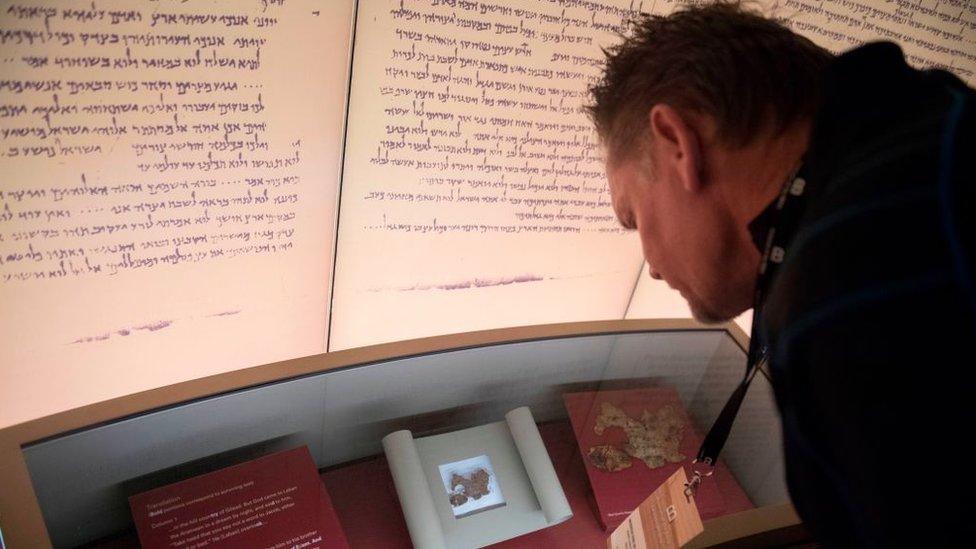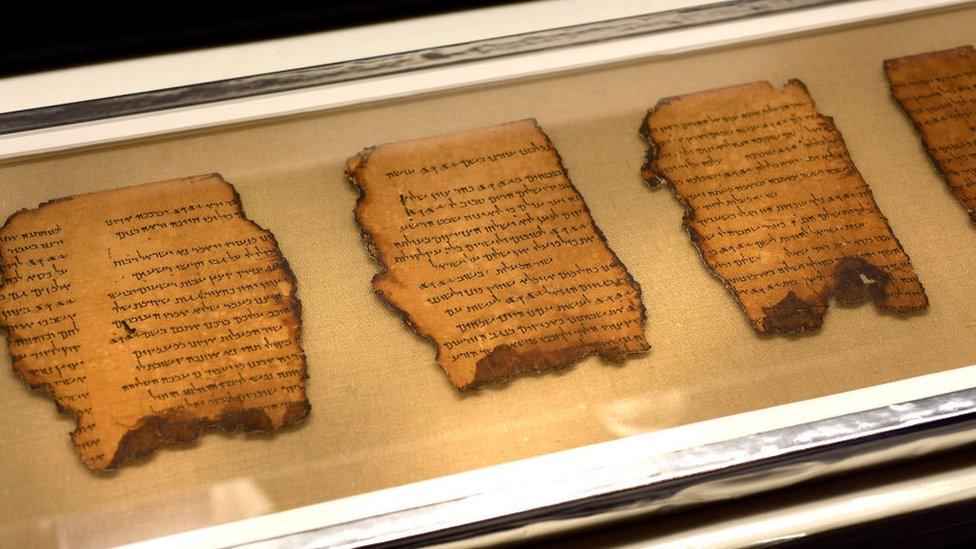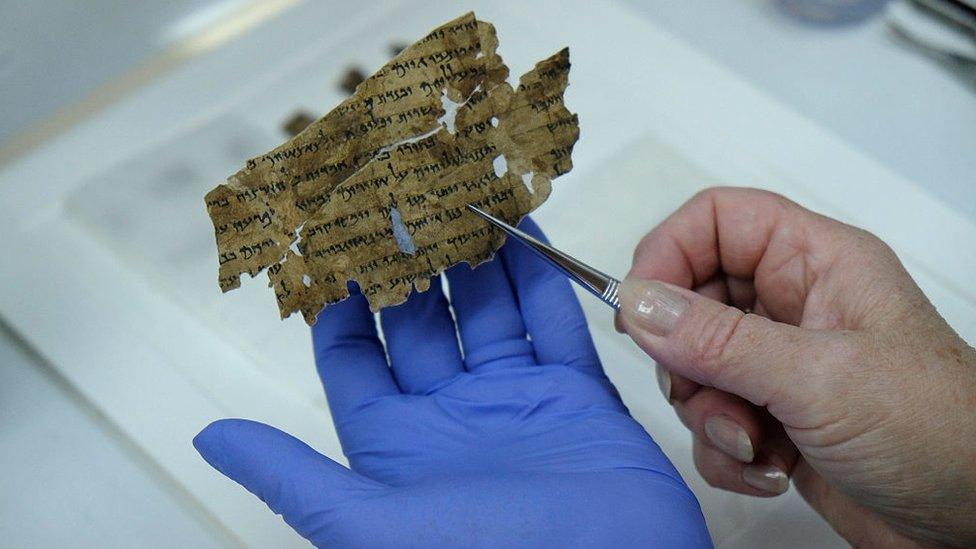US museum Dead Sea Scroll collection found to be fakes
- Published

A visitor at the Bible Museum's Dead Sea Scrolls exhibit - where all the fragments have been found to be fake
A collection of supposedly valuable Dead Sea Scroll fragments on display at the Museum of the Bible in Washington DC has been found to be fake.
After six months of analysis, experts released a 200-page report detailing how the fragments were forged - likely made from old shoe leather.
"Each exhibits characteristics that suggest they are deliberate forgeries," the analysts said in a statement.
The scrolls are a set of ancient manuscripts of the Hebrew Bible.
The first of the scrolls were found in caves in Qumran on the western shore of the Dead Sea in 1947. They were reportedly first discovered by a young Bedouin shepherd searching for lost sheep. Their discovery is considered to be among the most significant archaeological finds in history.
The majority are held in a collection by the Israeli government.
The fakes were among the most valuable artefacts in the Museum of the Bible's collection.
Costing $500m (£386m), the museum was opened by Evangelical Christian and billionaire Steve Green in 2017.

The scrolls, most now held in Israel, are a set of ancient manuscripts of the Hebrew Bible
Mr Green has not disclosed how much was paid for the 16 fragments but similar, authentic artefacts may be sold for millions.
"After an exhaustive review of all the imaging and scientific analysis results, it is evident that none of the textual fragments in Museum of the Bible's Dead Sea Scroll collection are authentic," said the head of the investigation, Colette Loll of Art Fraud Insights, in a statement.
Since 2002, previously unknown textual fragments - believed to be biblical artefacts belonging to the Dead Sea Scroll - surfaced on the antiquities market.
The Museum of the Bible purchased 16 of these fragments from four individual private collectors. Thirteen of these were published by a team of scholars in 2016 "to provide a comprehensive physical and textual description of the fragments," the analysts wrote. "At the time of publication, no scientific examination of the Museum's scroll fragments had been carried out."
"Since publication, scholars have expressed growing concern about the authenticity of these fragments."

The scrolls' discovery is considered to be among the most significant archaeological finds in history
To make convincing fakes, researchers estimate the forgers coated the scraps with a "shiny amber material... most likely animal skin glue".
The exhaustive report was the product of a six-month effort, including 3D microscopes, infrared spectroscopy and "energy dispersive X-ray analysis".
Part of the same collection had already been removed from display after tests in October 2018 found them to be inauthentic too.
These earlier tests were ordered after biblical scholars who examined 13 of the museum's previously unstudied fragments said there was a "high probability" that a number of them were modern forgeries.
And this was not the first time the museum's owners have faced controversy. In 2017, Mr Green's company the Hobby Lobby paid a $3m fine (£2.3m) and returned thousands of items after the US Department of Justice accused it of smuggling artifacts from Iraq.